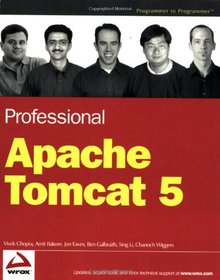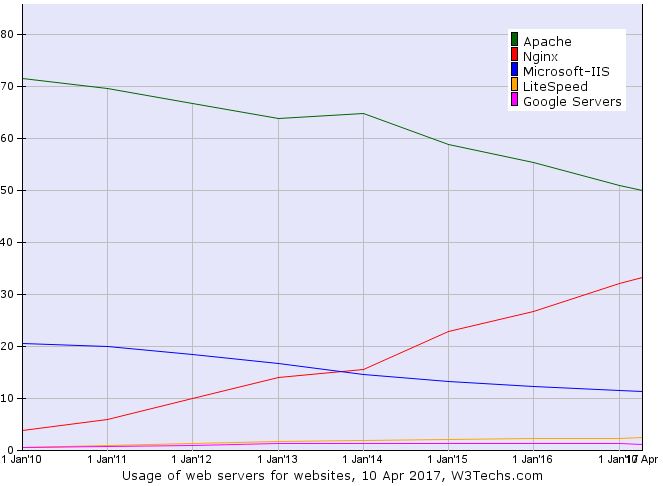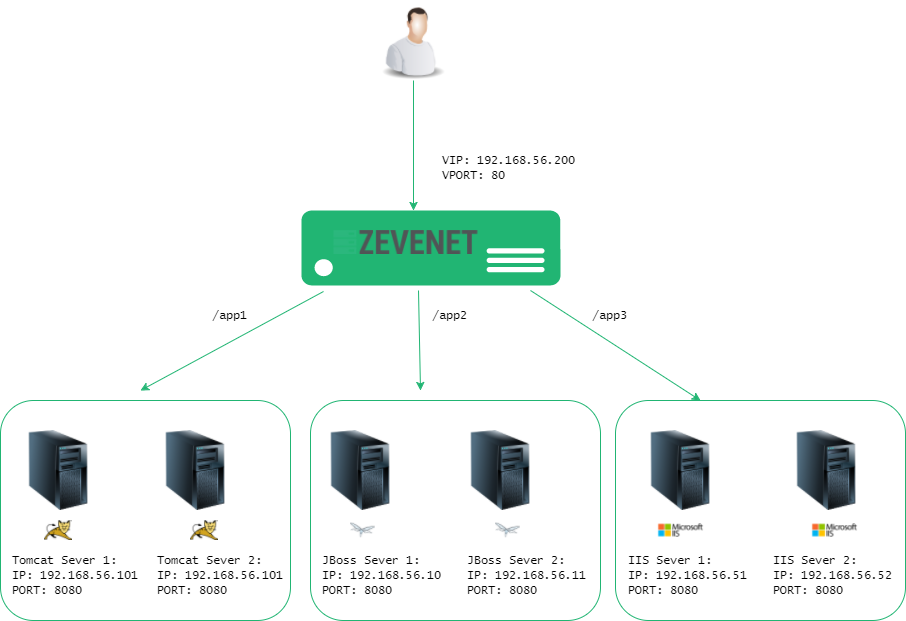Deploying an internet server isn't a one step deal. You would need to install a couple of servers that handle different aspects of a web server. The first one that you would need to install is the HTTP server. IIS (Internet Information Services) is a web server developed by Microsoft and a good choice for most people who are already comfortable with using Windows. Tomcat is another server, but it isn't meant to process HTML documents, it is intended to run Java and JSP applications. The tomcat was developed by Apache as a Java/JSP server. It is developed primarily to communicate with Apache's own web server but it is also compatible with IIS or any other web server available.
The server, whether Apache or IIS, grabs the traffic based on the IP and Port, which ever they are bound to listen to. Once it starts listening, then it uses the headers, such as the server name to filter and determine what site is being accessed. By default tomcat will recognize.jks keystore type. You can do this from using the keytool command that comes with Sun Java - recommended version is Sun Java 1.4.2 which already contains the Entrust.net Secure Server Root CA. NOTE: In case default tomcat port is used and if tomcat is installed on this same server, this step can be skipped. Make sure the IIS user (Launch IIS Process Account) has full rights for the c: tciis folder. Open the 'Internet Information Service (IIS) Manager' by selecting it from the Windows Start menu Administrative tools.
IIS was developed by Microsoft for use in its NT OS that is intended for mainframes and web servers. It is currently considered as the second most popular web server in use today; second only to Apache. Despite being behind in standings, Microsoft has been gradually developing IIS along with its companion programs SQL Server and Silverlight which are both from Microsoft. These programs along with Microsoft's .Net Framework and the familiarity of most people to the Windows operating system makes IIS a very compelling web server choice. But in order to run Java and JSP programs on their server, users would need to install server program from its competitor; the Tomcat.

Roku tv screencast. Tomcat was the name given to the open source Java/JSP server that was developed by Apache to work in tandem with their own web server. Tomcat is undoubtedly the best in what it does partly because its only competition, JRun, has been problematic to most users. It is also very popular with most developers due to the simple fact that it is free and there is a lot of support from the open source community.
Choosing a web server for your own site is usually up to the user. Although it is better for most users to stick to a single source of programs to ensure that they work together flawlessly, it is sometimes necessary to cross into the competing software provider for support with certain languages. This is the case with IIS and Tomcat. Most users of IIS choose to use it because they are already accustomed to the Windows environment and they prefer to have the proper customer support that a large company can provide. But Tomcat is the only program that can easily and reliably execute JSP and Java applications, leaving the user no option. It might be a little bit trickier to implement due to minor glitches, but IIS and Tomcat can work together.
- Difference Between Sony Cybershot S Series and W Series - December 22, 2012
- Difference Between Samsung Galaxy S3 and iPhone 5 - December 21, 2012
- Difference Between Samsung Galaxy S2 (Galaxy S II) and Galaxy S 4G - December 20, 2012

Jenkins tomcat deploy. Classic problem: you're running Windows and you need to run Apache TomCat without resorting to using port 8080, or somesuch.


Roku tv screencast. Tomcat was the name given to the open source Java/JSP server that was developed by Apache to work in tandem with their own web server. Tomcat is undoubtedly the best in what it does partly because its only competition, JRun, has been problematic to most users. It is also very popular with most developers due to the simple fact that it is free and there is a lot of support from the open source community.
Choosing a web server for your own site is usually up to the user. Although it is better for most users to stick to a single source of programs to ensure that they work together flawlessly, it is sometimes necessary to cross into the competing software provider for support with certain languages. This is the case with IIS and Tomcat. Most users of IIS choose to use it because they are already accustomed to the Windows environment and they prefer to have the proper customer support that a large company can provide. But Tomcat is the only program that can easily and reliably execute JSP and Java applications, leaving the user no option. It might be a little bit trickier to implement due to minor glitches, but IIS and Tomcat can work together.
- Difference Between Sony Cybershot S Series and W Series - December 22, 2012
- Difference Between Samsung Galaxy S3 and iPhone 5 - December 21, 2012
- Difference Between Samsung Galaxy S2 (Galaxy S II) and Galaxy S 4G - December 20, 2012
Jenkins tomcat deploy. Classic problem: you're running Windows and you need to run Apache TomCat without resorting to using port 8080, or somesuch.
For me, I needed to install Atlassian JIRA on a Windows machine that was running some other sites on IIS. 7. Restart JIRA and voila. I HIGHLY recommend restarting the entire machine to make sure everything still works. Thanks again for the great post!' target='_blank'>I found this terrific blog post which set the foundation for this post. Take a look at it first.
Ukulele songs and tabs by Richard G 12.30 (Young Girls Are Coming to the Canyon) F /8 - Mamas and the Papas 2000 Light Years From Home E /4 - Rolling Stones 24 Hours From Tulsa F /7 - Gene Pitney. Click to email this to a friend (Opens in new window) Click to share on Facebook (Opens in new window) Click to share on Twitter (Opens in new window). Many other songs and songbooks are available on our website at the links/ukulele groups pages. Choose Canada or U.S.A 4th Peg Songbook Beginning Ukulele Songbook Big Muffin Songbook Brighton Ukulele Songbook 1 Brighton Ukulele Songbook 2 Campfire Songbook Christmas Ukulele Songbook Doctor Uke Family Day Uke George Formby Solos Book by Mike Warren HappyUkuleleSongbookv2 Jim Carey's Ukulele. Welcome to Richard G's Ukulele Songbook This site is chock full of ukulele chords and tabs for songs especially for beginners and experienced players. This site has something for everyone, with a collection of over 1,300 ukulele songs mostly from the 60's, 70's, 80's and 90's, specifically arranged for uke.
The answer is relatively simple, but you need another IP address to do this. IIS, by default, binds to all IP addresses available on the machine. You can set the machine to only bind to a specific IP address using Netsh, which comes with Windows 2008 and up (for Window2003 you need httpcfg which is bundled with the Support Tools ). Note that all ports per IP are bound. You cannot pick and choose ports.
Apache Tomcat Download
- Use Netsh. Google for commands – sorry, don't have time for the details.Tip: by default the bind list is empty. When you add the IP it will force IIS to use ONLY what you are binding.
- Go to IIS and set all your sites to a specific IP/s from * (just to remove any doubt) as it will still list all IPs bound to the card.
- Restart the machine or all the HTTP services (I prefer reboots to make sure)
- Do netstat -an and you should see only your bound IP – it might be a long list of output.
- Find the server.xml in JIRAconf. Make a backup.
- Big difference to the blog post: I had to tell Tomcat to bind to a specific IP address to get it to work. Simply add address='XX.XX.XX.XX', as below. Replace the X's with your IP, of course (and make sure it is not the IP you bound using netsh – I was a little sleepy and added the wrong IP initially).
- maxThreads='150″
minSpareThreads='25″
connectionTimeout='20000″
enableLookups='false'
maxHttpHeaderSize='8192″
protocol='HTTP/1.1″
useBodyEncodingForURI='true'
redirectPort='8443″
address='XX.XX.XX.XX'
acceptCount='100″
disableUploadTimeout='true'/> - Restart JIRA and voila.
Iis Vs Tomcat
I HIGHLY recommend restarting the entire machine to make sure everything still works.

